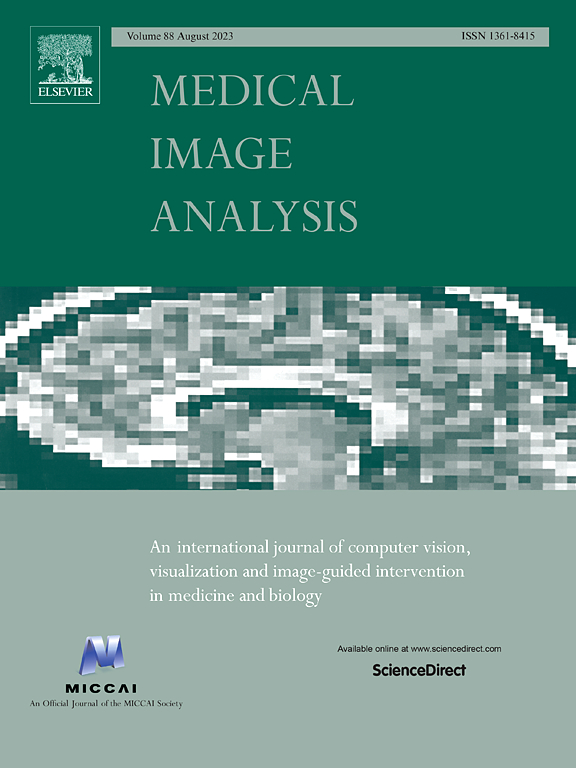Ensemble and low-frequency mixing with diffusion models for accelerated MRI reconstruction
IF 10.7
1区 医学
Q1 COMPUTER SCIENCE, ARTIFICIAL INTELLIGENCE
引用次数: 0
Abstract
Magnetic resonance imaging (MRI) is an important imaging modality in medical diagnosis, providing comprehensive anatomical information with detailed tissue structures. However, the long scan time required to acquire high-quality MR images is a major challenge, especially in urgent clinical scenarios. Although diffusion models have achieved remarkable performance in accelerated MRI, there are several challenges. In particular, they struggle with the long inference time due to the high number of iterations in the reverse process of diffusion models. Additionally, they occasionally create artifacts or ‘hallucinate’ tissues that do not exist in the original anatomy. To address these problems, we propose ensemble and adaptive low-frequency mixing on the diffusion model, namely ELF-Diff for accelerated MRI. The proposed method consists of three key components in the reverse diffusion step: (1) optimization based on unified data consistency; (2) low-frequency mixing; and (3) aggregation of multiple perturbations of the predicted images for the ensemble in each step. We evaluate ELF-Diff on two MRI datasets, FastMRI and SKM-TEA. ELF-Diff surpasses other existing diffusion models for MRI reconstruction. Furthermore, extensive experiments, including a subtask of pathology detection, further demonstrate the superior anatomical precision of our method. ELF-Diff outperforms the existing state-of-the-art MRI reconstruction methods without being limited to specific undersampling patterns.
求助全文
约1分钟内获得全文
求助全文
来源期刊

Medical image analysis
工程技术-工程:生物医学
CiteScore
22.10
自引率
6.40%
发文量
309
审稿时长
6.6 months
期刊介绍:
Medical Image Analysis serves as a platform for sharing new research findings in the realm of medical and biological image analysis, with a focus on applications of computer vision, virtual reality, and robotics to biomedical imaging challenges. The journal prioritizes the publication of high-quality, original papers contributing to the fundamental science of processing, analyzing, and utilizing medical and biological images. It welcomes approaches utilizing biomedical image datasets across all spatial scales, from molecular/cellular imaging to tissue/organ imaging.
 求助内容:
求助内容: 应助结果提醒方式:
应助结果提醒方式:


